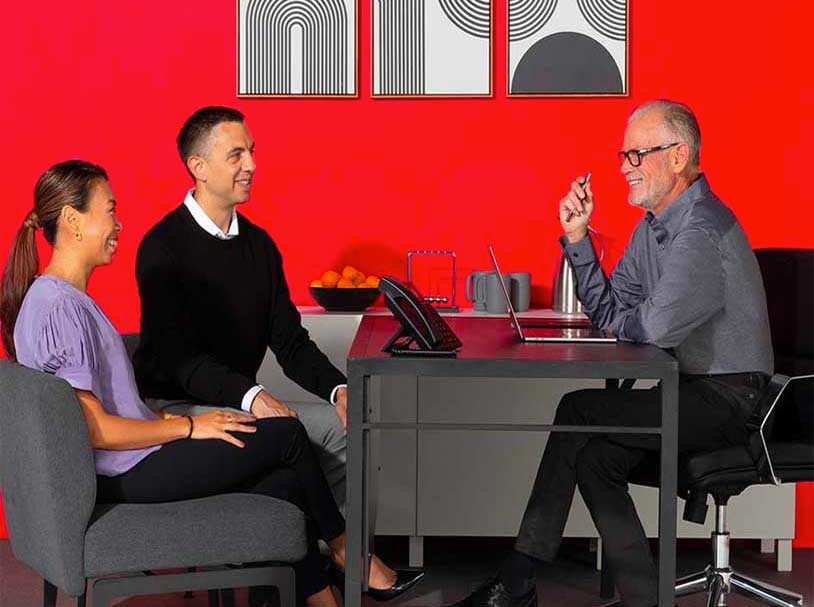Bad customer service stories that’ll scare your socks off (and how to fix them)

Bad customer service stories are abundant. You’re familiar with at least one of them: the automated help line that drones, “Your wait time is approximately 59 minutes.” And that’s just to get an agent. You’ll be hearing the hideous on-hold music in your nightmares.
My favorite scary-bad customer service cartoon depicts a restaurant sporting the ubiquitous warning, “No shirt, no shoes, no service.” The twist? A surly, bare-chested, barefoot waiter who barks, “Get it yourself!”
That’s amusing—until you’re the one on the receiving end of terrible customer service. Most people won’t put up with this. According to a recent survey, 87 percent of people said they’d walk away from a brand they like after just one poor customer service experience. Yikes! That doesn’t leave much margin for error.
Consequences of Bad Customer Service
What happens when disgruntled customers exit, stage left, for more customer-centric brands? A domino effect ensues:
- Revenue suffers
- Employee morale declines
- Business reputation is damaged
- Costs increase (product returns, refund requests)
- Negative customer reviews proliferate. Research reveals 79% of people who have a poor customer service experience tell their friends or family about it!
- The company experiences ongoing financial loss
- Brand loses its luster
Yet over-the-top service isn’t necessary either, per a seminal article in Harvard Business Review. Rather than worry about “delighting” customers, the piece counsels, just make sure you don’t destroy their goodwill with bad customer service.
What bad customer service looks like
Consider these bad customer service examples, and how they might have been handled:
- An out of town executive, in San Francisco to attend a three-day conference, discovered when she registered at her hotel that her surname was misspelled on her name badge. She asked if it could be re-done. “We’re busy now,” the desk clerk told her, “come back later.” She did, and the extra badges couldn’t be located. Finally the executive found a felt tip pen and redid the badge herself. A better response: “We’re sorry for the error. We’ll create a new name badge and have it ready for you when the conference begins.”
- A couple attended the theatre one evening, and three minutes before curtain time another couple arrived—who held season tickets for the identical seats. (The theatre had inadvertently duplicated certain seat numbers on tickets.) The manager appeared and insisted the first couple follow her to the lobby, which they understandably refused to do, not wanting to miss the start of the show. The manager became irritated, saying they were preventing others from enjoying the performance. Eventually everyone was resettled satisfactorily, but the displaced couple was livid at the manager’s behavior. A better response: “Looks like we had a printing mix-up with the tickets! Let’s seat you over here instead. We apologize for the inconvenience, and would like to offer you a complimentary beverage at intermission.”
- A medical writer needed information from a library reference text that could not be checked out. He phoned the medical library to make sure the specific volume he needed was available. No problem, the woman on the phone assured him. When he arrived to photocopy the single page, the book couldn’t be located. “Somebody upstairs must’ve got their signals crossed,” the librarian shrugged. He asked if he could call later and have her scan and email the page to save him another trip across town. “Oh no,” she replied, “We don’t have time to do things like that.” A better response: “Gosh, somebody got their signals crossed! So sorry for your wasted trip. We can hold the volume you need behind the reference desk if you’re able to come back today.”
- A widower received a renewal notice in his wife’s name for her driver’s license. While government agencies are known for being notoriously slow, the woman in question had been gone for two years. A better response: The husband sent back the notice marked “Deceased”. The motor vehicles department needs to follow up by removing her name from their database.
One of the more famous (and hilarious) examples of extraordinarily bad customer service is now a classic, known as “United Breaks Guitars.” Musician Dave Carroll, who was flying United Airlines, saw the baggage handlers casually tossing his $3500 guitar around, which ended up damaging it. United denied his request for restitution, so Carroll went into the studio and recorded a country tune describing the entire incident, with a very funny video. United Breaks Guitars became a cult hit, and is a textbook example of how not to handle a customer complaint!
A better customer experience
Contrast the above horror stories with this better customer experience. Buying shoes is challenging for one of our team members due to a narrow heel, and she’d already visited a number of stores trying to find a pair of boots that fit properly. She remembered one shop with well-trained staff and a good selection, and went there next.
The young sales associate who helped her began by measuring her feet—something she hadn’t experienced since childhood—then brought out multiple sizes of the styles the woman selected, as well as another style she thought might work. At one point the sales associate inserted an extra insole for the larger of her two feet. It took our colleague an hour to make her decision, and the entire time, the sales associate remained friendly, patient, helpful, and creative in finding potential solutions.
The following day, our colleague called the store owner and heaped praise on the sales associate, commending what she perceived as extraordinary customer service. In contrast to her experience elsewhere, which was not bad customer service so much as the absence of service, she viewed this experience as exceptional.
Sometimes, the simplest way to improve customer service is simply to provide what’s expected, with a measure of care. Businesses don’t need to go the extra mile when an extra ten yards is already miles beyond the competition.
Here’s another example: I have a friend whose preferred skin care product is only available locally at a small market. They were out of stock the other day, and a store associate suggested she call the person in charge of that department on Monday. When she did, the department manager said there was one left in back stock and she’d place it on hold until my friend could get there at the end of the week. That’s the extra ten yards—all it takes to improve customer service.
Bad customer service made new
Given today’s volatile business climate, it’s fair to say that customer service is not just a competitive edge, it is the competitive edge. What people are buying is expectation.
This concept isn’t new, or even revolutionary. What’s astounding is that so many companies pay lip service to customer service, but bad customer care continues.
Yet change needn’t be difficult. For instance, your company can commit to resolve customer calls efficiently with a practice known as First Call Resolution, which means just what it sounds like: a customer’s issue is handled successfully with the initial phone call. One and done! You can measure call center performance to determine where you need to tweak to improve your service results. You can also give customers convenience with shift-to-text, enabling their voice call to shift to a text channel for faster response.
Call recording is also a great tool to help determine the quality of customer interactions. For example, the bad customer experience at the library might not have been caught—unless the patron complained, or someone reviewed the call to correct the librarian.
Stellar customer service ultimately rests squarely on the shoulders of line staff. The salesperson. The hotel clerk. The librarian. The baggage handler. The call center agent. But it begins at the top, with how a company views customer service.
Each of us is the cornerstone of service. Because true service is an attitude—and it begins with a commitment to customer care.

Learn more about how Ooma Office can help your business.
Thank you!
An Ooma Office Sales Representative will be in touch shortly.
866-573-0707


Learn more about how Ooma Office can help your business.
Just call 877-621-0515 or click this to CHAT. Or, fill out this form and someone will reach out to you shortly.



